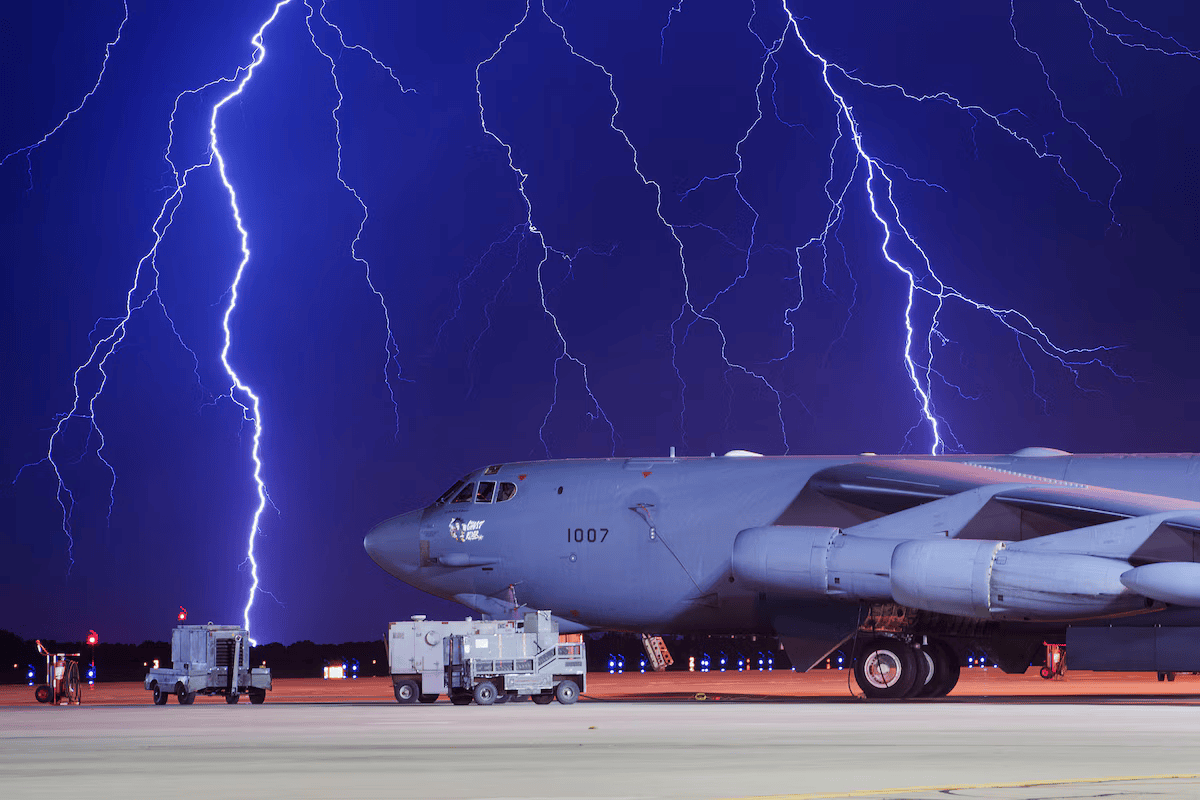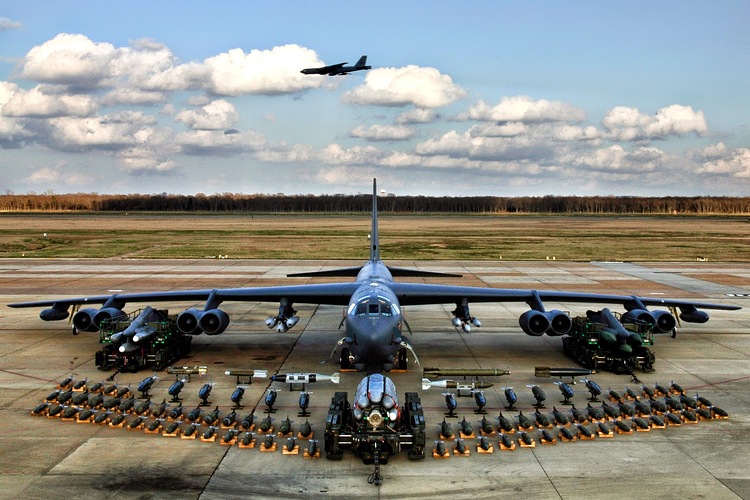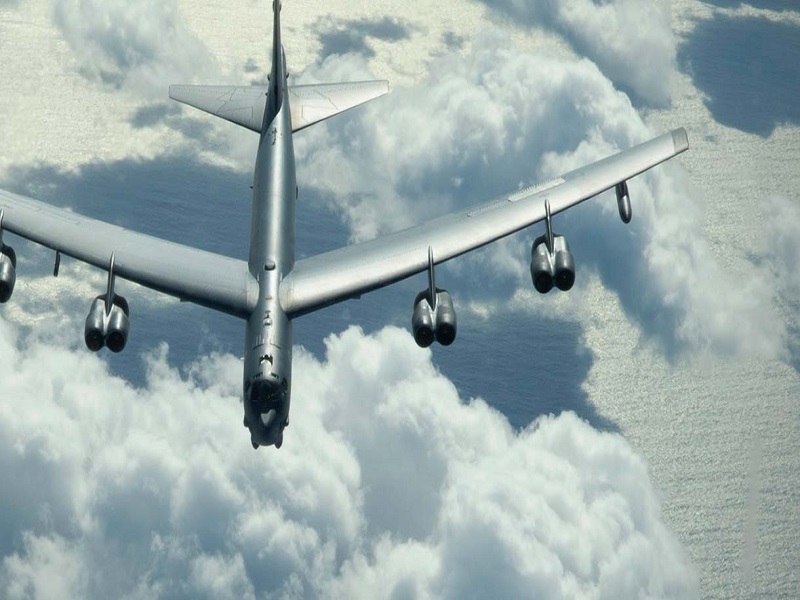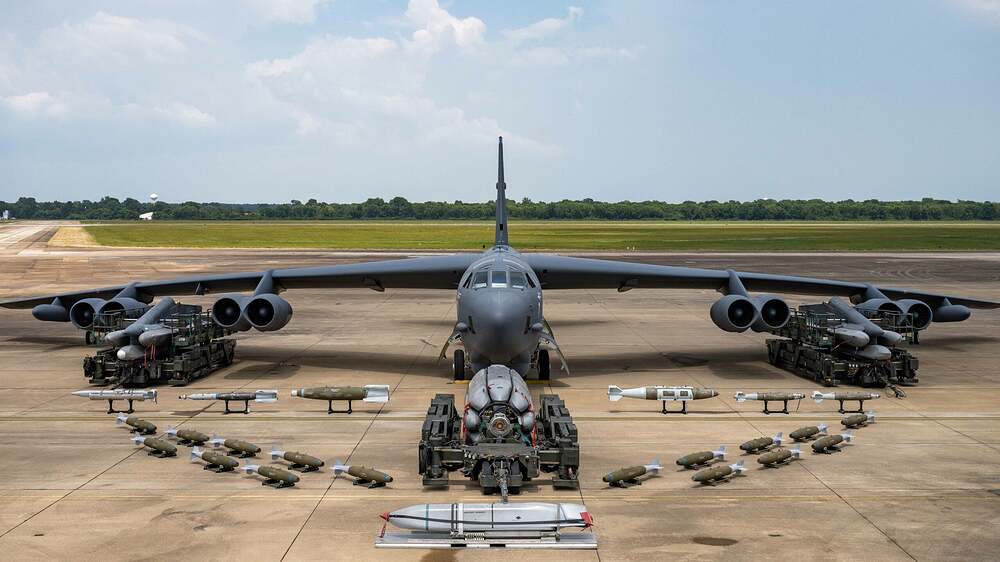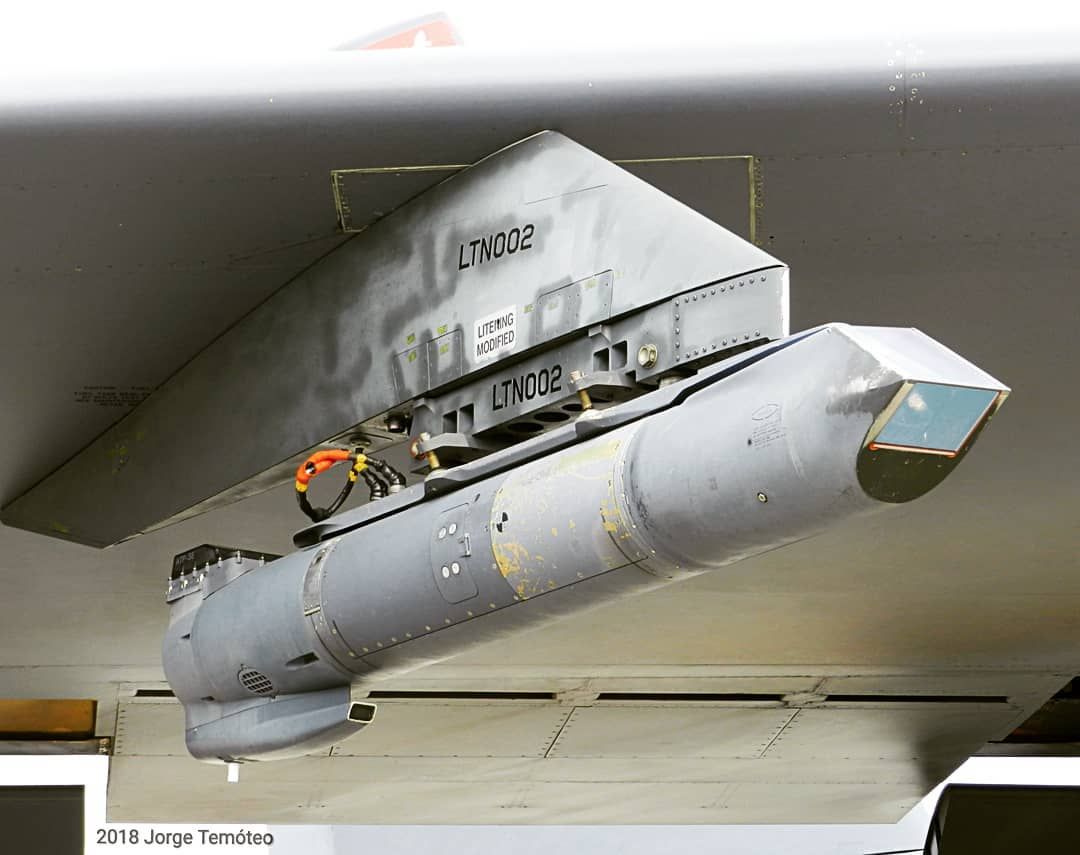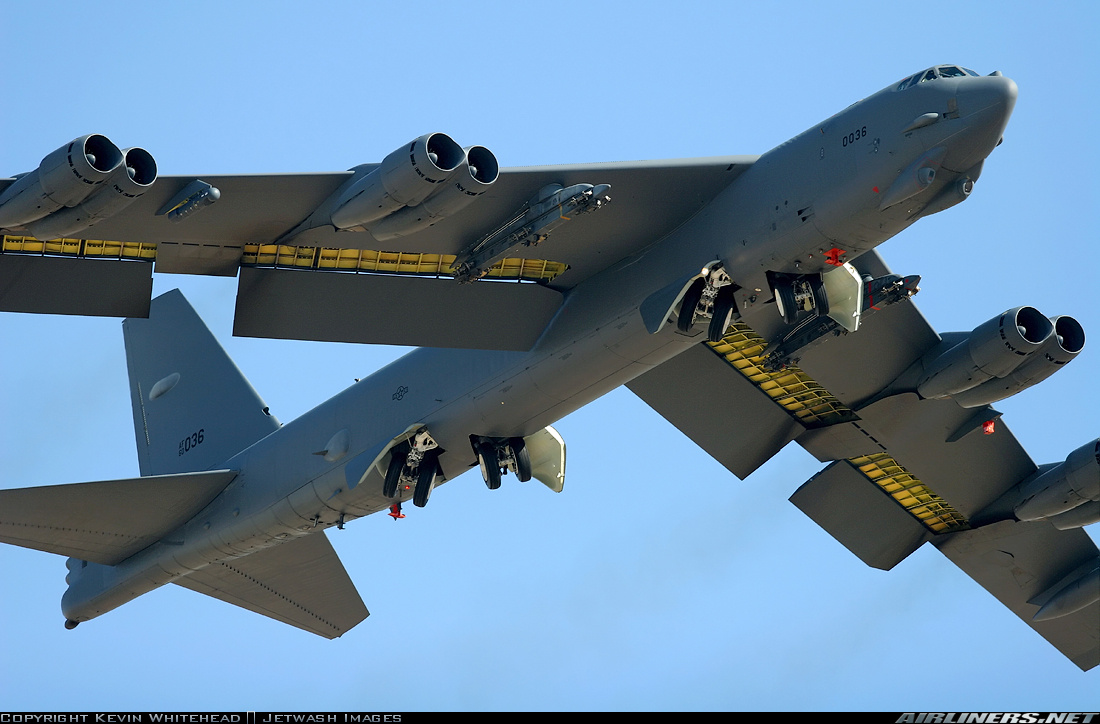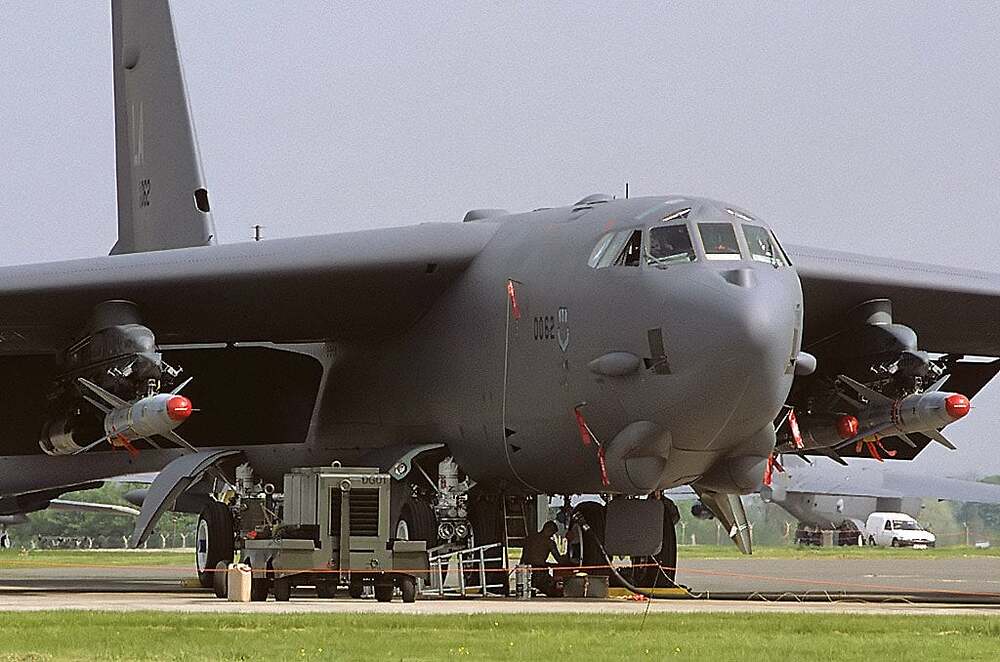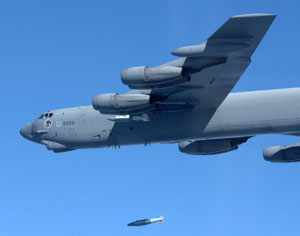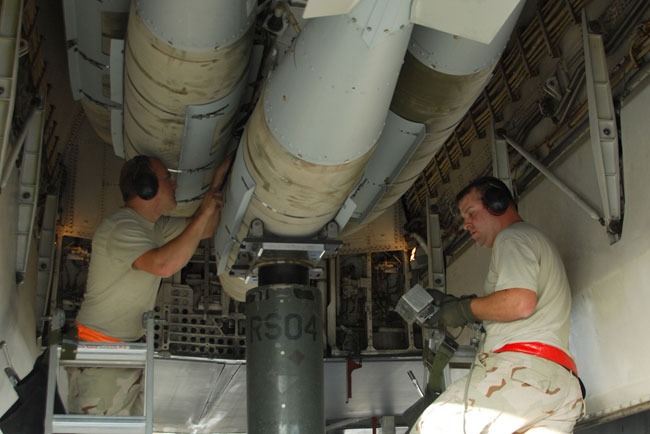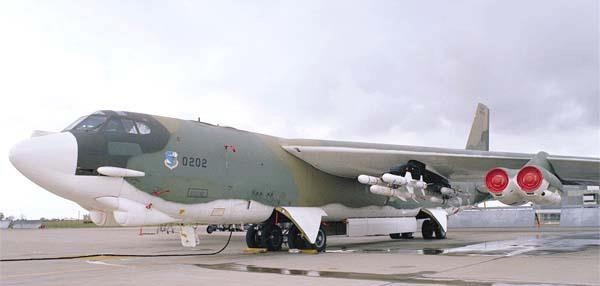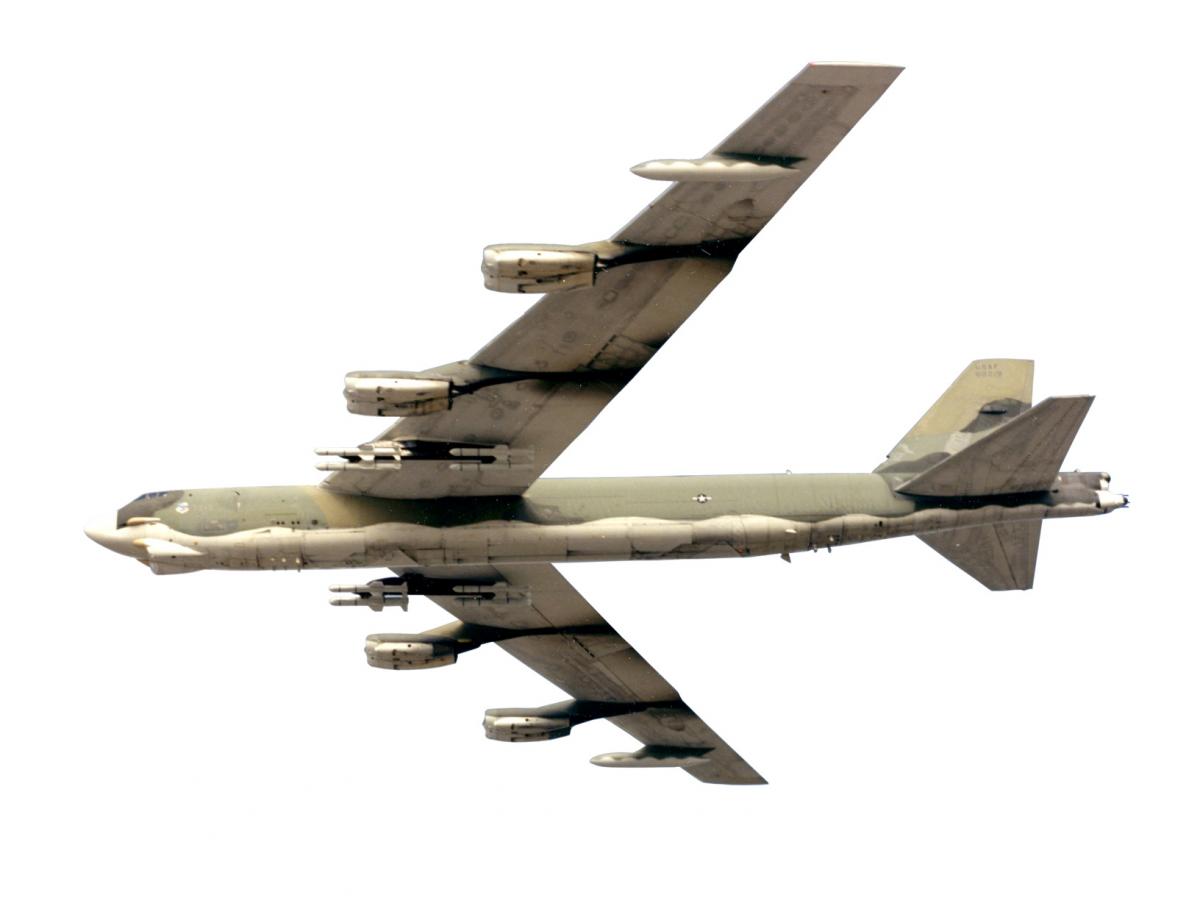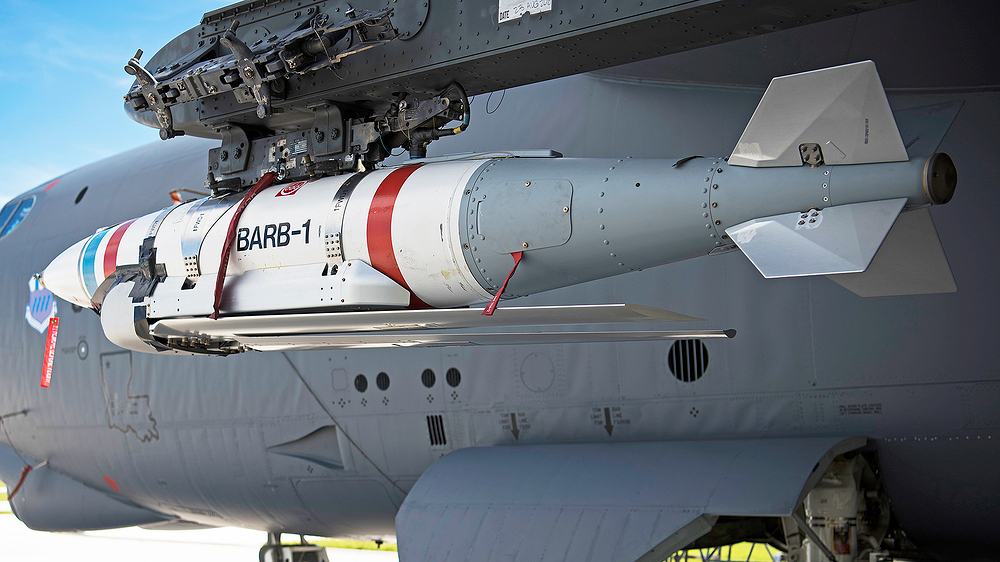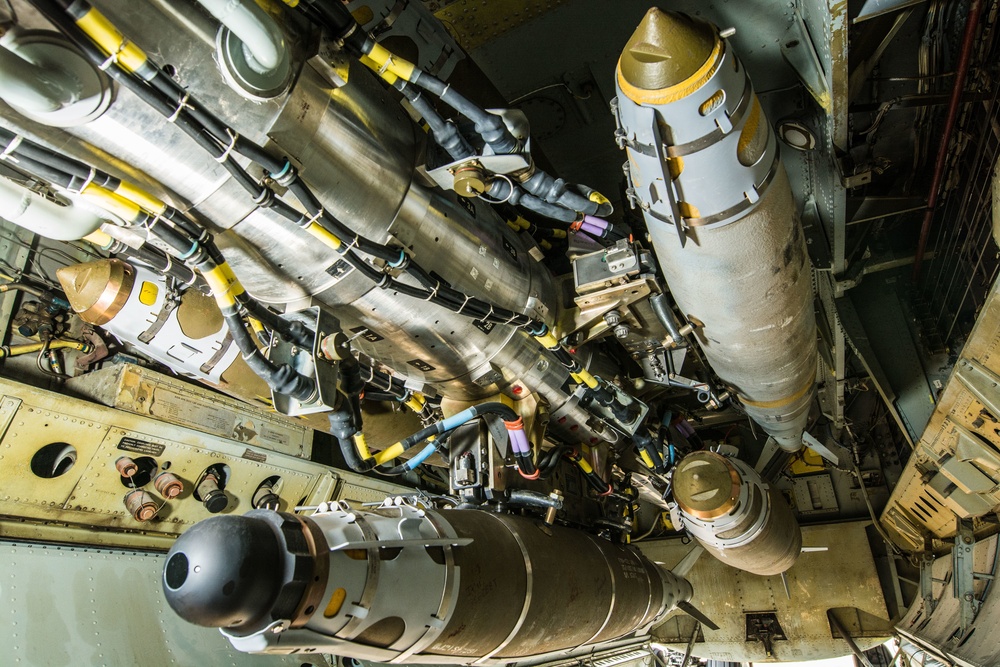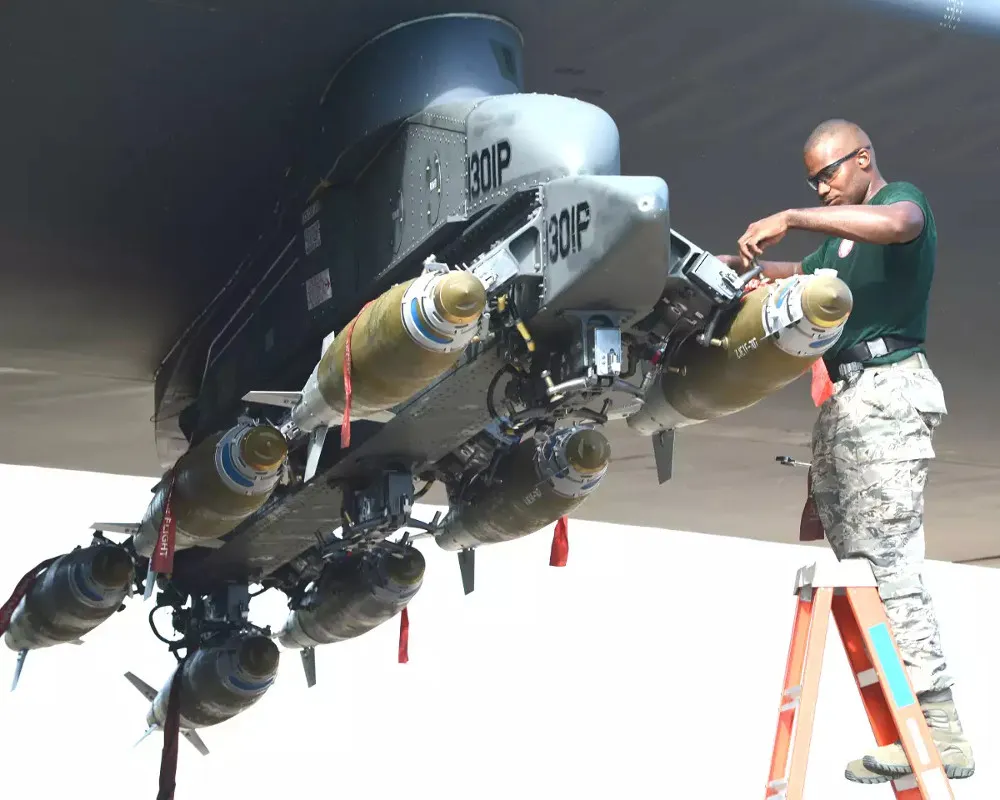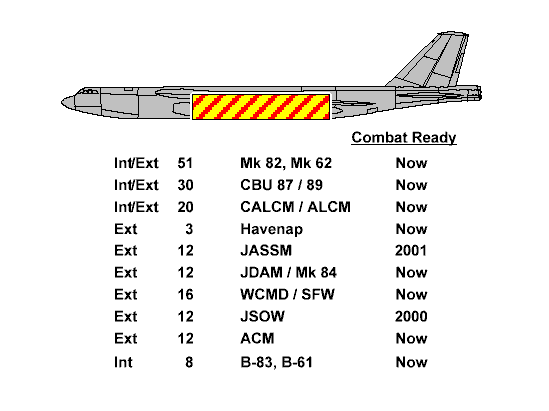- Yes
- No
The first of 102 airframes of the B-52H, the last manufacturing type of the Stratofortress series, was delivered in May 1961. Boeing continued to produce these aircraft until October 26, 1962, when the B-52 production run came to an end. The H model was introduced to replace previous models and had the renowned 20 mm M61 Vulcan tail gun, enhanced avionics, improved electronic countermeasures, and more economical Pratt & Whitney TF33 turbofan engines. These features were later deleted in the early 1990s.
Operation Desert Storm and Operation Allied Force both demonstrated the aircraft’s adaptability. Wide-area troop concentrations were hit by B-52s, which also destroyed installations and bunkers and severely damaged the Iraqi Republican Guard’s morale. As part of Operation Desert Strike, two B-52Hs launched 13 AGM-86C Conventional Air-Launched Cruise Missiles, or CALCMs, against communications and power plants in Baghdad on September 2-3, 1996. At the time, the 34-hour, 16,000-statute-mile round-trip flight from Barksdale Air Force Base, Louisiana, was the longest distance flown on a combat mission.
The B-52 helped make Operation Enduring Freedom a success in 2001 by using precision guided weapons to offer close air support while loitering high above the action. Additionally, the B-52 contributed to Operation Iraqi Freedom by launching about 100 CALCMs on a nighttime operation on March 21, 2003. In Syria and Iraq, B-52s conducted almost 1,800 combat sorties against ISIS fighters, greatly contributing to the decline of ISIS in the region.
The Combat Network Communications Technology (CONECT) update was introduced by the U.S. Air Force in 2013. It involved digitizing the cockpit of the B-52H, enabling in-flight mission retargeting through Link-16 and JREAP/IBR systems, and establishing real-time links between satellite images and targeting data. By removing smart weapons from the wings, the 1760 Internal Weapons Bay Upgrade (IWBU) increased payload flexibility and reduced drag by enabling the bomber to carry up to eight JDAMs, JASSMs, or MALD decoys internally.
As part of the Air Force’s Commercial Engine Replacement Program (CERP), which pairs new Rolls-Royce F130 engines with the Radar Modernization Program (RMP), which installs a contemporary AESA radar, the B-52 will remain relevant into the 2050s. The aircraft will be renamed B-52J after both improvements are finished. The radar upgrade’s initial operational capability is anticipated by 2027, with complete engine integration aimed by 2033, despite financial and technical delays.
The only remaining model in the Air Force inventory is the H model, which is used by the Air Force Global Strike Command’s 5th Bomb Wing at Minot AFB in North Dakota and the 2nd Bomb Wing at Barksdale AFB in Louisiana. Additionally, the aircraft is assigned to Barksdale AFB’s 307th Bomb Wing of the Air Force Reserve Command.
Engines: x8 Pratt & Whitney engines TF33-P-3/103 turbofan (76 kN)
Length: 48.5 meters
Height: 12.4 meters
Wingspan: 56.4 meters
Empty Weight: 83,250 kg
Max takeoff: 219,600 kg
Max speed: 1046 km/h (mach 0.84)
Range: 14,100 km
Ceiling: 15,151 m
Unguided Bombs
- x51 500lb bombs (mk82)
- x51 750lb bombs (M117)
- x20 1000lb bombs (mk83)
- x20 2000lb bombs (mk84)
Guided Bombs
- GBU-57A/B Massive Ordnance Penetrator (MOP)
- x24 500lb JDAM (GBU-38)
- x20 1,000lb JDAM (GBU-32)
- x20 2,000lb JDAM (GBU-31)
+ laser and extended range variants
Air-to-surface Missiles
- x8 AGM-142 Popeye
- x12 AGM-84 Harpoon
- x12 joint stand-off weapons (JSOW)
- x20 AGM-86C conventional air-launched cruise missiles (ALCM)
- x20 AGM-158A Joint Air-To-Surface Standoff Missile (JASSM)
- X20 AGM-158B Joint Air-To-Surface Standoff Missile - Extended Range (JASSM-ER)
- x12 AGM-129 advanced cruise missiles (ACM),
Targeting Pods
- AAQ-33 Sniper
- AN/AAQ-28 Litening II
Other
- x16 wind-corrected munitions dispensers (WCMD)
- X24 ADM-160A/C Miniature Air-Launched Decoy (MALD/-J)

-
APQ-166 Radar
- Synthetic Array Radar (SAR)
- Inverse Synthetic Array Radar (ISAR)
- Ground-moving target indication
-
AN/ALQ-172(V)2 electronic countermeasures system
-
An AN/ALR-20A wideband countermeasures receiving set
-
An AN/ALR-46(V) digital radar warning receiver.
-
An AN/ALQ-122 false target generator system.
-
An AN/ALT-28 jamming transmitter.
-
An AN/ALQ-153 tail-warning radar set.
-
AN/ALT-32H high-band jamming sets.
-
AN/ALT-32L low-band jamming sets.
-
Two AN/ALT-16A barrage jamming transmitters, driven by the AN/ALQ-122.
-
AN/AYQ-10 Ballistics Computer
-
AN/AAQ-6 Forward Looking InfraRed (FLIR)
-
AN/AVQ-22 Low Light TeleVision (LLTV)
-
x12 AN/ALE-20 flare dispensers, with a total of 192 flares.
-
x8 AN/ALE-24 chaff dispensers, with a total of 1,125 chaff.
Sources
Avionics, Weapons Bay Upgrades Increase the B-52H Conventional Attack Versatility - Defense Update:
https://www.af.mil/About-Us/Fact-Sheets/Display/Article/104465/b-52h-stratofortress/
https://www.airforce-technology.com/projects/b52/?cf-view
https://theaviationist.com/2024/06/23/b-52-agm-158-jassm/
JASSM / JASSM ER | Missile Threat
https://www.airforce-technology.com/projects/b52/?cf-view
https://www.forecastinternational.com/archive/disp_old_pdf.cfm?ARC_ID=1569
B-52 Bomber Faces More Delays, Rising Costs in New Upgrades - Business Insider
https://www.af.mil/About-Us/Fact-Sheets/Display/Article/104465/b-52h-stratofortress/
